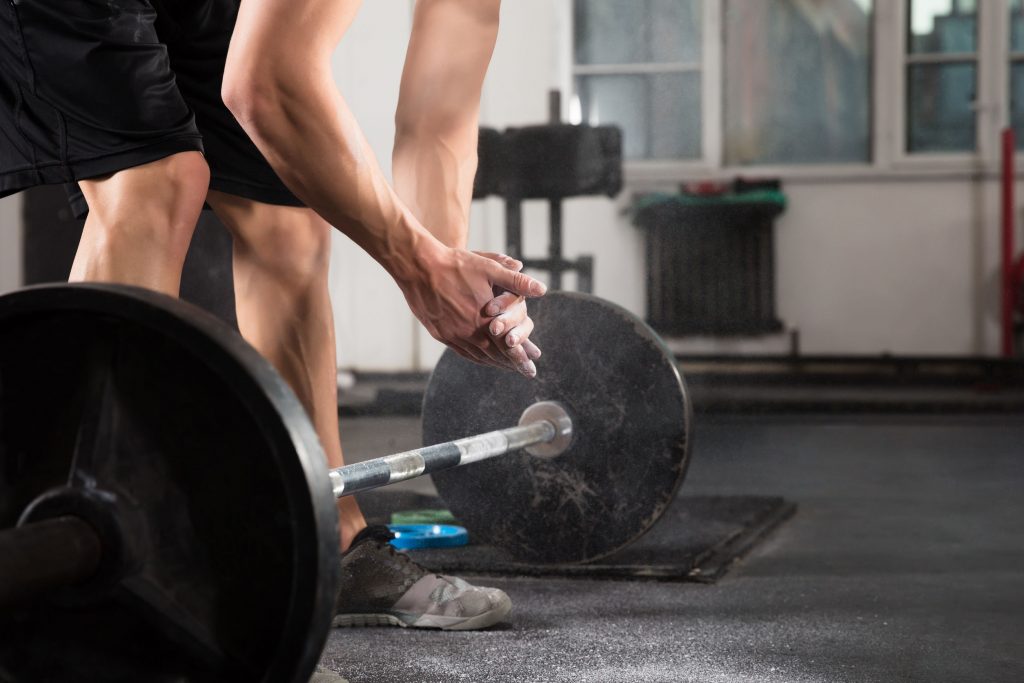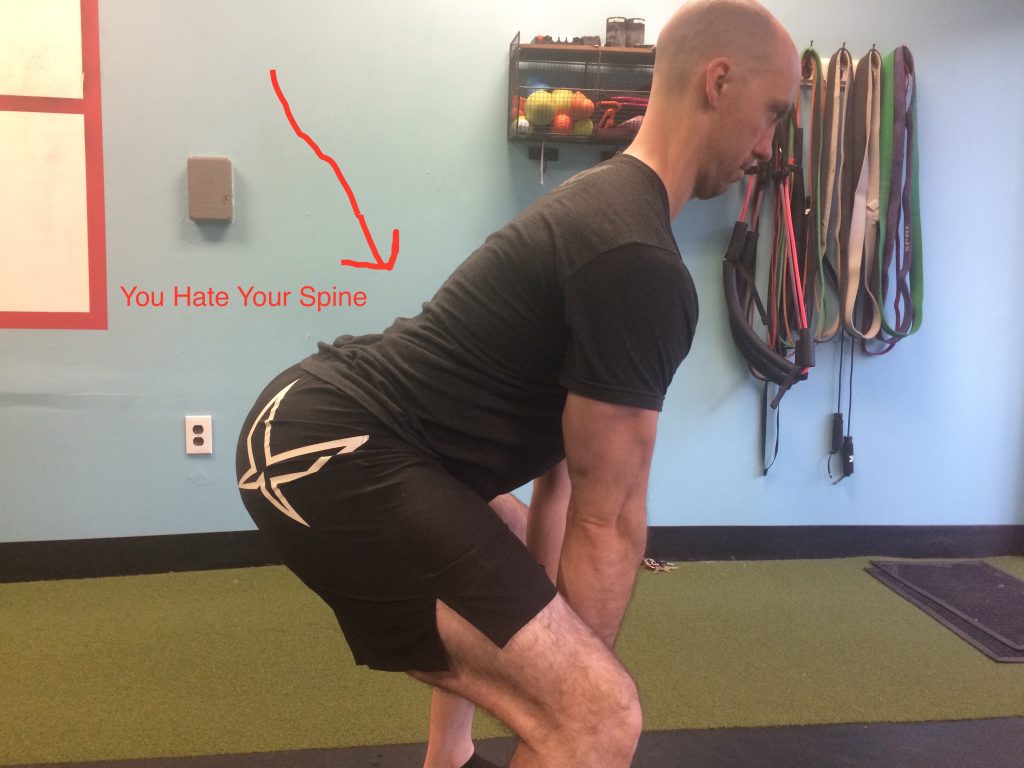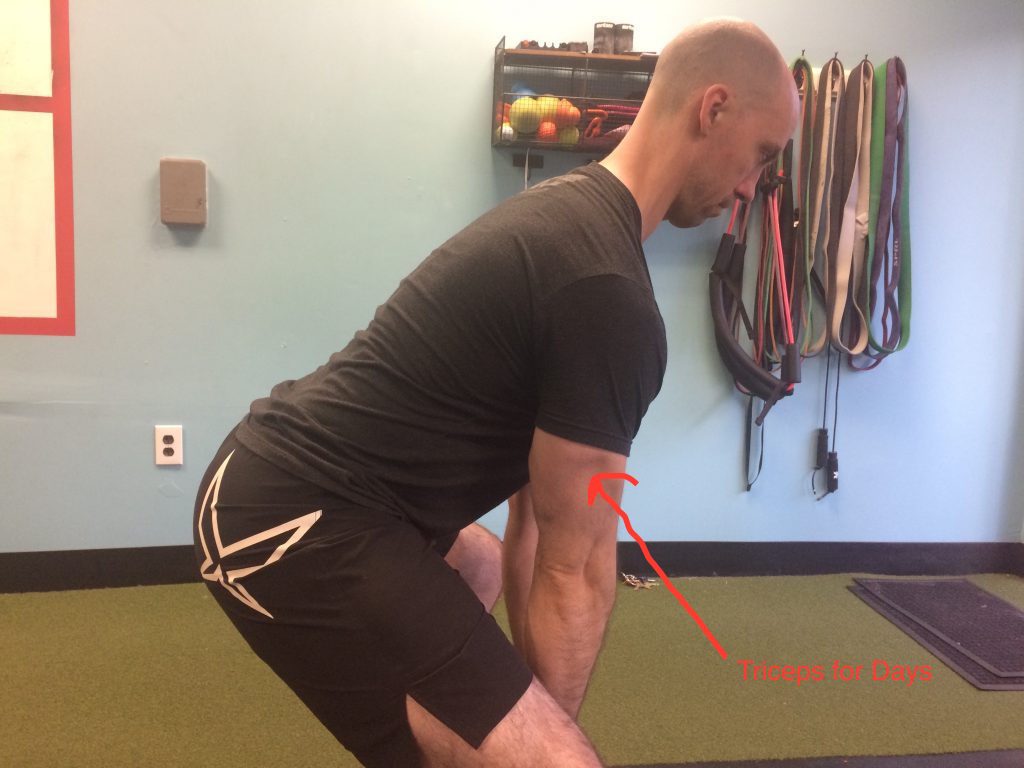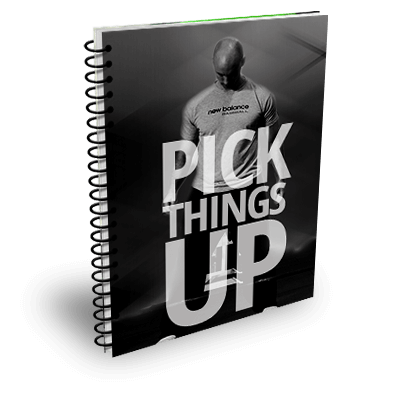Deadlifts Are Only Dangerous Because You’re Unable to Coach Them
I doubt there’s any more dichotomous exercise in existence than the deadlift. Those who like it, really like it. Those who hate it, really hate it.

Copyright: andreypopov / 123RF Stock Photo
On the “Like It” side of the fence are powerlifters, people who like to lift heavy things, Gandalf, and otherwise those who view it as a basic movement pattern (hip hinge) which helps people get bigger, faster, stronger, more resilient, less likely to breakdown, and less likely to die during the impending zombie Apocalypse.
Gracing team “Hate It” is an eclectic group as well. While there are exceptions in each example given below, in my experience, those who have beef with the deadlift tend to be primary care practitioners, some physical therapists, some chiropractors, some fitness professionals, 90% of yoga instructors, every person with a vested interest in selling a product preying on women’s irrational fears of getting bulky, and rabbits.
I can’t explain it. Rabbits are weird.
Believe me when I say this: The list above is not concrete. I have many friends and colleagues who are physical therapists, chiropractors, yoga instructors, and the like who are fans of the deadlift and use it routinely with their clients/athletes/patients.
It’s just that, more often than not, whenever I do hear someone speak ill of it, it’s almost always someone with a lot of letters next to his or her’s name (or with limited experience in the weight room).
Take this recent email I received from a chiropractor friend of mine:
“If you could be of assistance I would love to share your opinion on deadlifting with some of my colleagues who feel it is detrimental to the low back. One doc feels it could be responsible for pars fractures in the lumbar spine, I agree with you not likely if done correctly.”
To answer your question:
1. Seriously, I can’t explain the rabbit thing.
2. A Pars Fracture is one of the most common causes of low back pain in general population clients, but also adolescent athletes. It involves a small connecting bone in the lumbar spine called the pars interarticularis, and it’s an area that’s (generally) compromised when excessive extension and rotation of the spine enter the mix.
As far as youth athletics is concerned, I saw this a lot in my time at Cressey Sports Performance as a result of one of two scenarios:
- A sedentary kid jumps right into playing a rotational sport (baseball) without any window of preparation. These were the kids who would wait until a week or two before the season started before participating in any strength & conditioning work.
- An overzealous kid (or, rather, parent) plays a sport, one sport, year round, and develops a pattern overload injury.
In both cases there can be deleterious effects, at worse, a condition called Spondylolisthesis or “spondy” or end-plate/pars fracture.
With regards to general population, many of the above still applies. But usually it’s a sedentary lifestyle resulting in poor hip mobility, t-spine mobility, which then compromises spine integrity resulting in faulty movement mechanics.
I.e., being “stuck” in extension.
As an example:
Deadlift Setup: Overarch/Gross Extension/Gross in General

Deadlift Setup: Doesn’t Make My Corneas Want to Jump Out of Their Sockets

In the first picture there’s an exaggerated extension pattern, which, over time, could (not always) have negative ramifications on spine health.
If so, fix it!
Clean up/regress the pattern to where someone is successful, limits compensation patterns, and can “own” the movement. Remember: A deadlift isn’t just a loaded straight bar on the ground.
Don’t demonize an entire exercise and label it the root cause of a specific type of back pain because you’re unable to coach it well or understand how to scale it correctly to fit the needs, injury history, and ability level of an individual.
What’s to say any ONE thing is the culprit in the first place? We don’t really know what cause back pain:
- Lack of hip internal rotation.
- Repetitive flexion, repetitive extension.
- Weak anterior core.
- Weak glutes.
- Kitten cuddles.
It could be anything.
I think any health/fitness professional who frames any one exercise or modality as all-encompassing “dangerous,” at all times, for every individual, and is the root-cause of any one specific injury, is doing the industry a disservice.
The words we use and how we frame things can set a toxic precedent.
Messages That Can Harm People With Back Pain
Note: I found this list somewhere on the internet and saved if for a time I’d need it, like this. I have zero recollection where I found it, and I don’t even remember there being a source.
Regardless, thank you to the person(s) who made it. Please don’t sue me for plagiarism.
Promote Beliefs About Structural Damage/Dysfunction
- “You have degeneration/arthritis/disc bulge/disc disease/a slipped disc”
- “Your back is damaged.”
- “You have the back of a 70 year old.
- “It’s wear and tear.”
Promote Fear Beyond Acute Phase
- “You have to be careful/take it easy from now on.”
- “Deadlifts are dangerous/you should avoid deadlifts from now on.”
- “Your back is weak.”
- “You should avoid bending/lifting.”
Promote Negative Future Outlook
- “Your back wears as you get older.”
- “This will be here for the rest of your life.”
- “I wouldn’t be surprised if you will always be in pain.”
Here’s my response to all of that:
Messages That Can Heal People With Low Back Pain
Promote a Biopsychosocial Approach to Pain
- “Back pain doesn’t mean your back is damaged. It means it’s sensitized.”
- “Your Back pain can be sensitized by awkward movements, postures, muscle tension, inactivity, lack of sleep, stress, etc.”
Promote Resilience
- “It’s very rare to do permanent damage to your back.”
- “Your back is one of the strongest structures of your body.”
Encourage Normal Activity and Movement
- “Your back gets stronger with movement.”
- “Motion is lotion.”
- “Protecting your back and avoiding movement can make things worse.”
Because It’ll Make You Feel Better To Say It
- “The next time you tell me deadlifts are bad or dangerous, I’m going to tell you to eat a bag of dicks.”
Or, Maybe Don’t Do That and Take This Sage Train of Thought From Dean Somerset
“Anything “could” be bad if done improperly, or for the wrong reasons, wrong volume/load, or in people who don’t qualify to do the exercise. I would say it’s best to not blame the exercise as a cause, but to understand the mechanism of the injury and see if the exercise could contribute to it or not. There’s a lot of injuries that can come from deadlifts, not limited to only pars fractures.I wouldn’t avoid programming them for people due to this alone, but would progressively build people up to doing them well and under control with a load that is within their abilities to perform and recover from appropriately.”
We owe it to ourselves (and the industry) to be a little more open-minded, responsible, and less magnanimous at making such boisterous claims.[WU-TANG’s FOR THE CHILDREN.[/footnote]



Comments for This Entry
Calib
So if you have had a discectomy should you be concerned with dead lifting too much weight since some of the tissue that absorbs the weight is now gone? Something I have worried about 2 years out of surgery. I enjoy the lift but wonder if it could be a potential limitation?June 22, 2017 at 9:48 pm |
Tony Author
Yes, of course! I'd recommend seeking out a qualified coach to take you through a thorough assessment. I do think with appropriate progressions you CAN deadlift. It's just the variation you use will likely need to be tweaked and you'd obviously need to be careful with load and work up slowly.June 23, 2017 at 6:56 am |
Shane Mclean
All of this needed to be said Tony. Excellent article. When I first hurt my back many years ago and I went through the x-ray, MRI, Chiro and PT gamut, my doctor said "oh yeah you have arthritis in your spine (it was actually 3 herniated discs). Stop doing squats and anything that loads the spine." I was shattered but soon ignored his advice and powered through anyway. And here I am today. There is a ton of very bad advice about back, back pain and what causes it, which is unfortunate. Deadlifts and the hip hinge pattern actually make my back better. Each to their own I say.June 25, 2017 at 10:01 am |
Kelvin Sharp
You make a great point. No one exercise should labeled as evil. It happens a lot in the fitness industry, not just with exercises but with diets, macronutrients etc. People demonize carbs or fats or whatever and try to say they are completely evil. No one thing is the root of all problems, it's a combination of things done wrong that leads to issues.June 25, 2017 at 12:16 pm |
Tony Author
It's THAT mentality (that any ONE exercise is bad for EVERYONE) that drives me bonkers.July 1, 2017 at 7:53 am |
Penny Hadgeoff
Omg I literally did the coffee spit when I read the bag of dicks comment...😂😂😂😂😂June 25, 2017 at 4:36 pm |
Tony Author
Sometimes I surprise myself what comes out of my filthy "writing" mouth.July 1, 2017 at 7:52 am |
Jennifer Blake
I did the same thing when I read, "Motion is lotion," Penny. :)July 6, 2017 at 9:43 am |
Logan
Just read another article on DL you might enjoy reading. I'm not sure if I read it on Tony's site, but I was under the false assumption of SUMO requiring less hip extension torque until I read this article. https://www.strongerbyscience.com/should-you-deadlift-conventional-or-sumo/June 26, 2017 at 10:57 am |
Tony Author
Greg's a fucking smart dude. I hate him.....;o)July 1, 2017 at 7:51 am |
Eleanor Le Fevre
Tony your articles always make my day! I had low back pain throughout my life and started powerlifting 1 year ago. I PR'd at a 315 deadlift last night! Proof that lifting heavy is still possible with a jacked up lower back if you work up to it. Thank you for an insightful and entertaining article as always!July 6, 2017 at 11:55 am |
We Pull Up
I used to massive back issues / pain when I was in college. Once I started deadlifting several years ago, all the back problems I had in college disappeared. As long as you focus on form, the benefits of deadlifts far outweigh the perceived risks.July 11, 2017 at 10:36 pm |
Tony Author
Exactly! Good technique and proper progressions (and load) will go a long ways in keeping the back healthy.July 12, 2017 at 4:41 pm |
oldYellowLion
I spent about 40 years in "world class" sports, with Olympic golds and world champs, and also some years in fitness industry. With some clients saw what is hapeningg after several decades of Training. There is no lift or exercise good for everyone, and there is not only one correct form for everyone, Also, heavy lifting is not for everyone, even if you did it only 1 year and perfect form, after 20 -30 years a bigg part of population will feel it. I am not against any exercise or any load, but during several decades of following people and their training results( or problems), for me this is a fact, even with slow progression and enough time for adaptation.July 13, 2017 at 7:06 am |
Tony Author
No where in my article did I allude to "heavy" deadlifts. At least I don't think I did. Outside of that, I can't say I disagree with you on anything. I mean, lifting weights isn't supposed to tickle, so after 40 years......yeah, I'd say you'd likely have some aches and pains here and there.July 13, 2017 at 9:09 am |